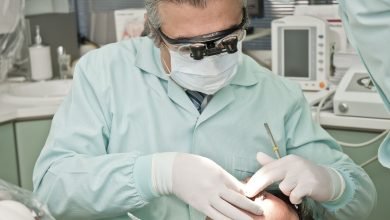Is Enamel Repair Always Possible and What Do We Do When It’s Not?
Enamel, the outermost layer of our teeth, is the hardest substance in the human body. But what happens when we damage that protective cover? Is enamel repair possible? How could we restore enamel that’s cracked or worn down?
These are some of the questions we’re going to answer in this article. Additionally, we’re going to discuss what happens when the treatments we’re going to suggest are no longer feasible options. If all else fails, there are several dental clinics that can install a tooth crown in Palatine, IL, and turn your frown upside down. So let’s start by answering the most basic question.
What Is Enamel? A Brief Tooth Anatomy Lesson
As we have established, enamel is the hardest material in the human body. However, that doesn’t tell us what it’s made of or how we can fix it. So before we talk about that, let’s deal with these obvious questions.
The outer layer of our teeth is made of the same minerals that make up the rest of the tooth — mainly calcium and phosphate. The main difference between the two layers is the way they’re constructed. While enamel is hard and non-porous, the dentin underneath it is porous and therefore easier to damage. That’s why we have that layer of enamel covering the visible parts of our teeth.
On top of that, it’s important to know that enamel is significantly thinner than dentin. As such, it’s also colorless and transparent — it’s the dentin that gives our teeth their color. However, there are certain food items that can stain and even damage the integrity of the enamel. With that in mind, let’s talk about how enamel erosion happens and how we can recognize it.
Causes of Enamel Erosion and Cracks
When humans age, they lose bone density as the body produces less calcium and other minerals. The same natural demineralization happens to our teeth, which is why generally they are more brittle in older people. But, as we have established, certain foods and medical conditions can hasten that process.
Coffee, tea, wine, fruit juices, and cigarettes can cause our enamel to take on a yellow or brownish hue. However, acidic beverages can also damage that outermost layer of our teeth in other ways. Namely, they can create an optimal environment for bacterial growth that will gradually erode the enamel.
Of course, the acids that can cause enamel erosion don’t need to come from outside of the body. Certain medical conditions — such as acid reflux or bulimia — can greatly damage the enamel covering the teeth in the back of the mouth. Even some medications, like aspirin and antihistamines, may make our teeth more vulnerable. Anything that makes the mouth dry out can contribute to erosion because saliva usually helps us flush bacteria and food remnants from our teeth.
Whether one of these factors has jumpstarted the demineralization process or not, there are some things our teeth just can’t heal from. After all, enamel repair is only possible if the teeth aren’t too compromised. There are no dental techniques that can restore enamel if the tooth is cracked. Now that we’ve cleared that up, let’s talk about the telltale symptoms of enamel damage.
Symptoms of Enamel Damage
Figuring out if we’re dealing with enamel erosion is more difficult than dealing with, say, a broken tooth. If enamel repair is still possible, we probably won’t be able to feel serious pain. After all, the nerve endings in the tooth’s core shouldn’t be exposed.
However, teeth with worn enamel may exhibit some sensitivity to hot and cold temperatures, as well as sweet foods. Additionally, stripping away the enamel may reveal a differently colored dentin. Even though enamel is usually transparent, it typically gives the tooth a certain sheen. So if the enamel has eroded, our teeth may appear duller.
Moreover, some people may be able to feel the lack of enamel on their teeth. As we have established, enamel is non-porous and should therefore feel smooth when we run our tongue over our teeth. If that layer is compromised and the porous dentin has started to peek through, we may feel a rougher texture.
Lastly, in advanced cases of enamel erosion, we may see molar cupping, which is when the flat part of the crown develops imperfections. Usually, there are visible dents that look like someone has drilled shallow holes into the tooth. Cupping can happen as a result of tooth grinding as well as acid erosion but those two causes usually go hand in hand.
Still, that doesn’t answer the ultimate question. Can we restore enamel to its original state if our teeth have lost their mineral content?
Can Enamel Grow Back? Enamel Repair Methods We Can Use At Home
Unlike most bones in the human body, our teeth can’t fuse back after they crack. However, remineralizing the surface layer of the tooth is something we can do.
If the enamel hasn’t completely disappeared, minor flaws in the protective barrier can be handled at home. We can fortify our teeth with remineralizing fluoride toothpaste and mouthwash. These dental products work against decay and strengthen our teeth. Best of all, they’re easily accessible.
Aside from that, sticking to the other dental care tips is essential. While caring for eroded enamel, it’s especially important to brush our teeth at least twice daily or even after every meal. Remember, a good brushing session should last for at least two minutes. On top of that, we should also floss daily to remove food remnants from between the teeth.
Speaking of food, if we want to prevent enamel erosion, we should steer clear of sugary or acidic foods — and that includes fruit, too! Starchy foods like potatoes, rice, and bread should be reduced as well. Simple carbs increase the amount of fermentable sugars in the mouth.
Of course, those sugars and bacteria can be washed away with saliva. So it’s important to keep hydrated while we’re focusing on restoring our enamel. Chewing sugar-free gum can stimulate saliva production and help flush sugar, plaque, and carbs from teeth. On the other hand, sipping water throughout the day will work just as well.
Lastly, certain vitamins can improve our chances of keeping our enamel intact. If you can’t get enough calcium and vitamin D in your diet — ask your doctor if you should be taking supplements.
Professional Methods of Enamel Repair
Now that we know how we can fix minor flaws in the enamel at home, let’s take a look at how the professionals do it. Dental bonding procedures are a fairly popular solution to this problem.
Essentially, a dentist would go in and cover chipped and cracked areas of the tooth with a thin coat of resin. That new layer takes on the role of the enamel. So this procedure should be able to help those that naturally don’t have enamel, too.
If the condition is too far gone, a dentist may recommend veneers, dental crowns, or, ultimately, tooth extraction. Still, most specialists would recommend keeping the original tooth in the mouth even if it’s weakened. That’s why crowns are a popular solution. So if you’re interested in learning about the process of installing a dental crown, check out this WebMD article.
Of course, when it comes to enamel repair, it’s best not to let the situation get to that point. Regular dentist appointments are crucial for spotting enamel erosion in time to stop it. In between checkups, the best thing we can do is stay hydrated, watch what we eat, and floss regularly.




